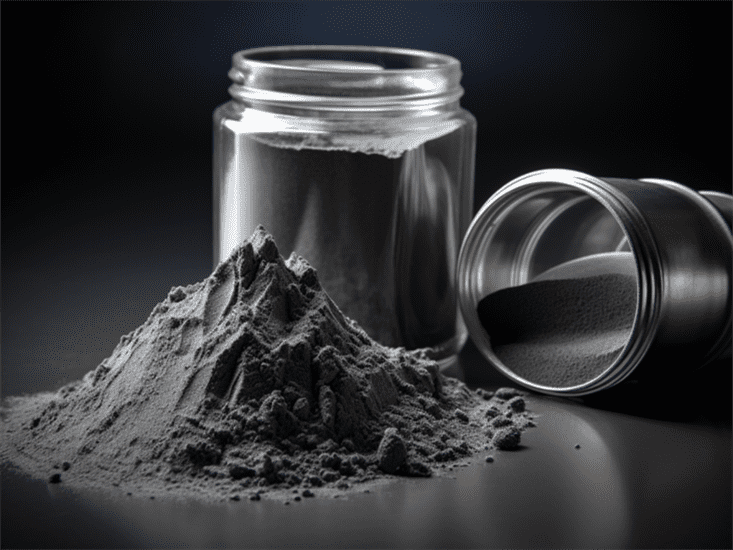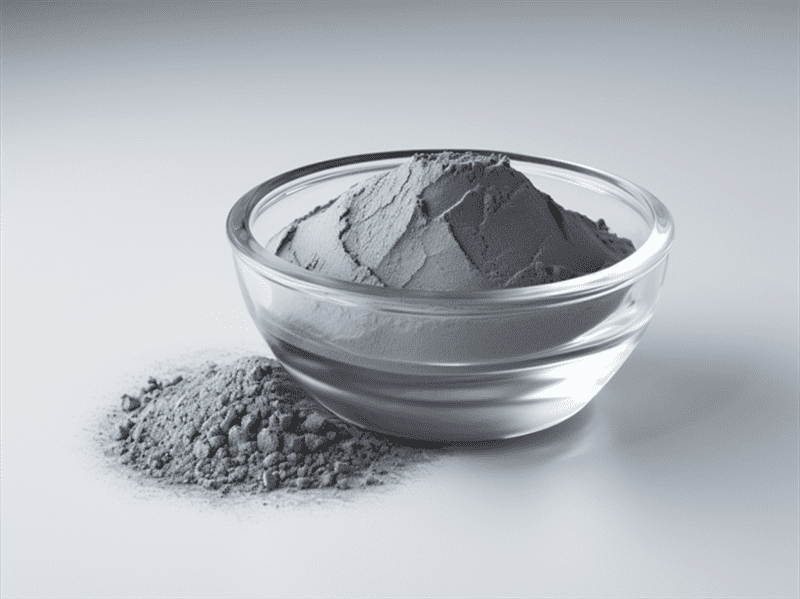Specifikace rozprašování kovového prášku
Obsah
Rozprašování kovového prášku je proces používaný k výrobě jemných kovových prášků s přesnou velikostí a distribucí částic. Tento průvodce poskytuje ucelený přehled zařízení pro atomizaci kovových prášků, včetně typů, charakteristik, aplikací, specifikací, dodavatelů, instalace, provozu, údržby a dalších informací.
Přehled zařízení pro atomizaci kovového prášku
Rozprašování kovového prášku spočívá v rozbití proudu roztaveného kovu na jemné kapičky, které tuhnou na částice prášku. K rozprašování kovu a kontrole vlastností prášku se používá specializované rozprašovací zařízení.
Mezi hlavní typy rozprašovačů patří:
| Typy rozprašovačů | Popis |
|---|---|
| Rozprašovače plynu | K rozbití proudu kovu použijte vysokorychlostní proudy inertního plynu. |
| Rozprašovače vody | Použití vodních trysek k rozprašování roztaveného kovu |
| Odstředivé rozprašovače | Pomocí rotujících kotoučů/kol k odlétávání kovových kapek |
| Ultrazvukové rozprašovače | Použití ultrazvukových vibrací k narušení proudu kovu |
Rozprašování umožňuje rozsáhlou kontrolu nad velikostí částic prášku, tvarem, chemickým složením, mikrostrukturou a distribucí velikosti částic. Parametry procesu lze přizpůsobit tak, aby se vyráběly prášky optimalizované pro danou aplikaci.
Mezi klíčové aplikace atomizace kovového prášku patří:
| Aplikace atomizace kovových prášků |
|---|
| Prášky pro aditivní výrobu |
| Prášky pro vstřikování kovů |
| Tepelně stříkané povlaky |
| Prášková metalurgie |
| Pájení slitin |
| Povrchová úprava |
| Katalyzátory |
| Chemický/ropný průmysl |
| Elektronické materiály |
| Magnetické materiály |
Specifikace zařízení pro rozprašování kovového prášku
Rozprašovače kovového prášku jsou komplexní konstrukční systémy určené pro kontinuální výrobu prášku s nízkými náklady. Mezi hlavní konstrukční specifikace patří:
| Specifikace zařízení rozprašovače | Podrobnosti |
|---|---|
| Metoda atomizace | Plynové, vodní, odstředivé, ultrazvukové |
| Zpracovávané typy kovů | Železné a neželezné kovy; slitiny |
| Rychlost posuvu kovu | Až 2000 kg/h |
| Průtok plynu | Až 100 000 m3/h při tlaku 10-15 barů |
| Konstrukce trysek | Více trysek; optimalizace průtoku/tlaku |
| Průměr disku | Až 500 mm pro odstředivý rozprašovač |
| Frekvence | Rozsah 20-60 kHz pro ultrazvukový rozprašovač |
| Ovládací prvky | Řízení pomocí PLC/počítače s monitorováním dat |
| Chlazení | Komponenty chlazené vodou/vzduchem |
| Environmentální systémy | Odsávání kouře; čištění plynem |
| Úroveň automatizace | Manuální až plně automatizované možnosti |
| Dodržování předpisů | Směrnice ATEX, CE; normy kvality |
Komora rozprašovače je vyrobena z vysoce kvalitní oceli, která je odolná vůči vysokým teplotám a kovovým stříkancům. Kritické součásti, jako jsou plynové trysky a rotující disky, jsou vyrobeny ze speciálních slitin s vysokou odolností. Integrované chlazení, bezpečnostní blokády a odsávání kouře minimalizují dopad na životní prostředí.
Pokročilé ovládací prvky umožňují optimalizovat procesní parametry, jako je průtok plynu, průtok kovu, rychlost disku, konfigurace trysek, aby bylo dosaženo požadovaných vlastností prášku. Systémy lze integrovat s tavicími jednotkami, jednotkami pro separaci prášku a sběrnými jednotkami pro automatizovanou výrobu prášku.

Dodavatelé systémů pro atomizaci kovových prášků
Existuje řada předních světových dodavatelů, kteří vyrábějí plynové, vodní, odstředivé a ultrazvukové rozprašovací systémy:
| Dodavatelé rozprašovačů | Umístění |
|---|---|
| AP&C | Kanada |
| Vakuové technologie ALD | Německo |
| PSI Ltd. | Spojené království |
| COPROD | Francie |
| Výroba kovových prášků | Spojené království |
| BHP | Austrálie |
Dodavatelé nabízejí standardní modely i rozprašovače na zakázku, které jsou přizpůsobeny konkrétním typům kovů a požadavkům na prášek. K dispozici jsou také použité a repasované atomizátory, jejichž cena je v porovnání s novým zařízením 30-50% nižší.
Ceny rozprašovačů se značně liší v závislosti na kapacitě, úrovni automatizace a dalších zpracovatelských jednotkách. Orientační náklady na nový systém jsou:
| Typ rozprašovače | Kapacita | Cenové rozpětí |
|---|---|---|
| Rozprašovač plynu | 50 - 1000 kg/h | $500,000 – $5,000,000 |
| Rozprašovač vody | 50 - 500 kg/h | $200,000 – $2,000,000 |
| Odstředivý rozprašovač | 10 - 200 kg/h | $100,000 – $1,000,000 |
| Ultrazvukový rozprašovač | 1 - 50 kg/h | $50,000 – $500,000 |
Instalace a provoz rozprašovačů kovového prášku
Pro dosažení projektovaných výrobních rychlostí a kvality prášku z kovových rozprašovačů je třeba dodržovat správné instalační a provozní postupy:
- Rozprašovače vyžadují speciální základy a služby včetně stlačeného vzduchu, chladicí vody a ventilačního potrubí. Prostor musí být klimatizovaný a bez průvanu.
- Požadavky na inženýrské sítě jsou potvrzeny na základě kapacity - elektřina, inertní plyn, výfukové systémy. Testují se bezpečnostní blokády.
- Provádí se zkušební provoz a dolaďují se parametry procesu, aby se optimalizovala výroba a vlastnosti prášku.
- Během provozu jsou všechny procesní ukazatele a údaje sledovány prostřednictvím řídicího systému. Rychlost posuvu, parametry plynu a teplota jsou řízeny podle receptury.
- Pokud se některý parametr odchýlí od rozsahu, systém se bezpečně vypne. Napájení a inženýrské sítě jsou vypnuty.
- Práškový produkt se po oddělení od proudu plynu shromažďuje pomocí cyklonů, pytlových filtrů, skruberů atd. Kvalita prášku se ověřuje pravidelným testováním vzorků.
- Preventivní údržba podle plánu zahrnuje kontrolu, výměnu opotřebovaných dílů, generální opravy. Tím se minimalizují neplánované prostoje.
Údržba a bezpečnostní aspekty
Pro maximální provozuschopnost a bezpečnost je důležitá pravidelná údržba:
- Vizuální kontrola těsnosti, poškození a opotřebení.
- Výměna spotřebního materiálu, jako jsou filtry, těsnění.
- Zkoušení blokování, bezpečnostních zařízení
- Mazání pohyblivých částí
- Kontrola stavu rotoru, trysky a disku
- Kontrola médií, jako je chlazení, větrání
- Kalibrace přístrojů
- Kontrola datových protokolů a trendů
Bezpečnostní hlediska pro rozprašovače kovového prášku:
- Vysokonapěťová elektronika vyžaduje izolaci a zábrany
- Přikrytí inertním plynem, aby se zabránilo oxidaci nebo požáru.
- Zamezení kontaktu vody s roztaveným kovem (nebezpečí výbuchu páry).
- Odsávání kouře pro minimalizaci expozice
- Personál potřebuje ochranné pomůcky a školení
- Stínění pohyblivých částí; blokování dveří
- Tlačítka nouzového zastavení a odpojení napájení
Jak vybrat rozprašovač kovového prášku
Klíčovými faktory, které je třeba vzít v úvahu při výběru systému rozprašování kovového prášku, jsou:
| Kritéria výběru rozprašovače | Podrobnosti |
|---|---|
| Výrobní kapacita | Požadovaný výkon kovového prášku v kg/h |
| Specifikace cílového prášku | Rozsah velikosti částic, morfologie, čistota atd. |
| Typy kovů | Kompatibilita s železnými, neželeznými atd. |
| Náklady | Náklady na zařízení, provozní náklady na kg |
| Požadavky na prostor | Plocha systému; výšková omezení |
| Podpora | Instalační podpora, školení, údržba |
| Možnosti | Další manipulační, separační a sběrné jednotky |
| Ovládací prvky | Úroveň monitorování, sledování dat, automatizace |
| Certifikace | Bezpečnostní předpisy, předpisy pro elektrotechniku a tlakové nádoby |
| Doba dodání | Doba dodání, instalace a uvedení do provozu |
Technologie rozprašování - plynová, vodní, odstředivá nebo ultrazvuková - se vybírá na základě materiálu, kapacity, specifikací prášku a rozpočtu. Přední světoví dodavatelé mají technické znalosti, které jim umožní doporučit optimální konfiguraci rozprašovače pro danou aplikaci.
Výhody a omezení rozprašovačů kovového prášku
Mezi hlavní výhody a omezení rozprašovacích systémů patří:
Výhody
- Kontinuální velkoobjemová výroba jemných kovových prášků
- Kontrola distribuce velikosti částic
- Schopnost atomizovat reaktivní slitiny s vysokým bodem tání
- Automatizovaná výroba prášku snižující náklady
- Integrovaná manipulace s práškem a jeho sběr
- Monitorování parametrů a sledování dat
Omezení
- Vysoké náklady na vybavení a provoz
- Komplexní systém vyžadující specializovaný provoz a údržbu
- Omezení velikosti a plochy velkých jednotek
- Omezení tvaru a kvality vstupní suroviny
- Bezpečnostní opatření pro vysokotlaký plyn, vodu a pohyblivé části
- Další následné zpracování potřebné k dosažení finálních specifikací prášku
Rozprašovače sice umožňují vynikající výrobu prášku, ale složitost procesu a zařízení vyžaduje odborný návrh a technickou podporu.

FAQ
Zde je několik nejčastějších dotazů týkajících se rozprašovačů kovového prášku:
Otázka: Jakého rozsahu velikosti částic lze dosáhnout pomocí rozprašování?
Odpověď: Rozprašovače mohou vyrábět prášky o velikosti od 1 mikronu do 250 mikronů v závislosti na použité technologii a procesních parametrech. Plynové a odstředivé rozprašovače mohou dosáhnout jemnějších velikostí pod 20 mikronů.
Otázka: Jak se prášek po rozprašování shromažďuje?
Odpověď: Rozptýlený prášek zachycený v plynu se odděluje pomocí cyklonů, vakových filtrů, mokrých praček atd. Pro práškové železo lze použít magnetickou separaci. Prášek se pak v případě potřeby prosévá, aby se zúžila distribuce velikosti.
Otázka: Jaká bezpečnostní opatření jsou vyžadována u rozprašovačů kovového prášku?
Odpověď: Klíčové bezpečnostní prvky zahrnují blokování, E-stop, ventilaci, nevýbušné elektrické zařízení, přikrytí inertním plynem, ochranné vybavení pro obsluhu a další. Také vodní rozprašovače potřebují opatření, která zabrání výbuchu páry.
Otázka: Jak často je nutná údržba rozprašovačů kovového prášku?
Odpověď: Preventivní údržba se plánuje týdně, měsíčně nebo čtvrtletně podle provozních hodin. Zahrnuje výměnu spotřebního materiálu, jako jsou filtry, testování blokování, kontrolu opotřebení dílů, generální opravy rotujících součástí atd.
Otázka: Může být jakákoli kovová slitina rozprašována na prášek?
Odpověď: Většinu komerčních slitin oceli, hliníku, mědi, niklu, titanu atd. lze atomizovat. Žáruvzdorné kovy mohou vyžadovat speciální konfiguraci rozprašovače. Provádí se omezené legování, aby se zabránilo segregaci v prášcích.
Otázka: Jaké typy surovin lze použít - ingoty, tekutý kov?
Odpověď: Různé rozprašovače přijímají různé vstupní suroviny - od lití tekutého kovu přes kontinuální lití až po podávání pevného drátu/tyče. Vstupní materiál musí splňovat chemické požadavky, požadavky na čistotu a kvalitu pro atomizaci.
Otázka: Jaké jsou provozní náklady rozprašovače kovového prášku?
Odpověď: Hlavní náklady jsou na energie - elektřinu, inertní plyn, chladicí vodu. Významné jsou také náklady na spotřební materiál a údržbu. Orientační provozní náklady se pohybují v rozmezí $15-50/kg prášku v závislosti na kapacitě, složitosti a práci.
Závěr
Rozprašování kovových prášků umožňuje velkoobjemovou výrobu jemných a konzistentních prášků z různých kovů a slitin. S rozvojem práškové metalurgie jsou rozprašovače nepostradatelným zařízením pro nákladově efektivní výrobu prášků.
Tento proces však zahrnuje složité technické systémy pracující při vysokých intenzitách. Tato příručka shrnuje kritické faktory - typy rozprašovačů, kritéria výběru, specifikace, instalaci a provozní postupy - které musí uživatelé zvážit pro bezpečné a spolehlivé rozprašování kovového prášku.
Sdílet na
MET3DP Technology Co., LTD je předním poskytovatelem řešení aditivní výroby se sídlem v Qingdao v Číně. Naše společnost se specializuje na zařízení pro 3D tisk a vysoce výkonné kovové prášky pro průmyslové aplikace.
Dotaz k získání nejlepší ceny a přizpůsobeného řešení pro vaše podnikání!
Související články

Vysoce výkonné segmenty lopatek trysek: Revoluce v účinnosti turbín díky 3D tisku z kovu
Přečtěte si více "O Met3DP
Nedávná aktualizace
Náš produkt
KONTAKTUJTE NÁS
Nějaké otázky? Pošlete nám zprávu hned teď! Po obdržení vaší zprávy obsloužíme vaši žádost s celým týmem.

Kovové prášky pro 3D tisk a aditivní výrobu
SPOLEČNOST
PRODUKT
kontaktní informace
- Město Qingdao, Shandong, Čína
- [email protected]
- [email protected]
- +86 19116340731








